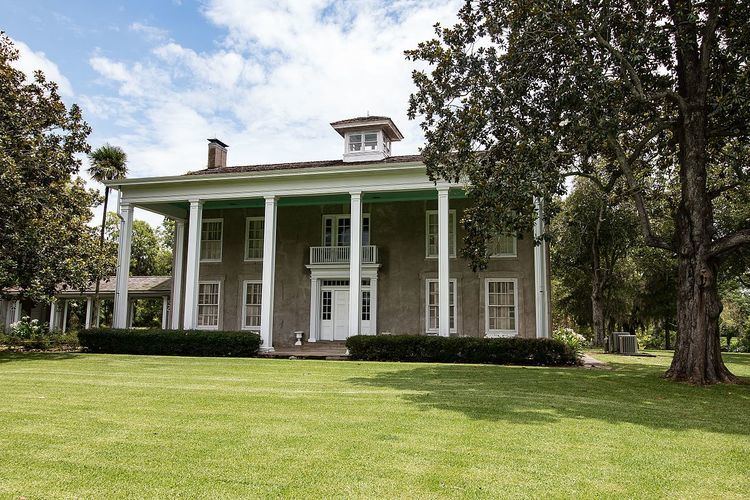NRHP Reference # 80004082 Designated RTHL 1964 Year built 1824 Added to NRHP 9 April 1980 | RTHL # 9603 Area 27 ha Phone +1 979-345-4656 | |
 | ||
Address 1702 N 13th St, West Columbia, TX 77486, USA Hours Open today · 8AM–5PMSaturday8AM–5PMSunday8AM–5PMMondayClosedTuesday8AM–5PMWednesday8AM–5PMThursday8AM–5PMFriday8AM–5PMSuggest an edit Similar Sabine Pass Battlegro, Starr Family Home Sta, Landmark Inn Complex, Fannin Battleground State Hist, Fort McKavett State Hist Profiles | ||
The Varner–Hogg Plantation State Historic Site is a historic site operated by the Texas Historical Commission. The site was the home of former Governor of Texas James S. Hogg and his family. The site is located outside of West Columbia, in Brazoria County.
Contents
History
The property was originally the home of Martin Varner, one of the Old Three Hundred and a veteran of the Texas Revolution. His was the nineteenth land grant offered in Stephen F. Austin's colony and consisted of over 4,600 acres (1,900 ha). He built the first house, a log cabin, on the property in 1824. Varner raised corn, cattle and sugar cane on the land, and had at least two slaves working for him. It is possible that he distilled rum from the sugar cane.
In 1834, Varner sold his holdings to Columbus R. Patton, representing his father, John D. Patton. The plantation was known as the Patton Plantation through the rest of the 19th century. The Pattons built what is now the main house on the same site as Varner's cabin. The Patton family developed the property into a sugar plantation. Columbus Patton brought slaves with him from Kentucky, and in 1833 sixty-six slaves were working the 13,500 acres of land. One of the slaves, Rachel Patton, became Columbus Patton's mistress, though after his death she was sent back into the field.
Several members of the Patton family were active in the Texas Revolution and one, William H. Patton, was aide-de-camp to Sam Houston. William was part of the group that guarded Antonio López de Santa Anna after his capture at the Battle of San Jacinto. Santa Anna was briefly held at the Patton Plantation.
Columbus Patton was declared insane in 1854, at which time his property was placed under the control of Brazoria County farmer and merchant John Adriance. Upon Patton's death in 1856, the estate was placed into probate, since Patton had died intestate. His family gave a portion of the land to Adriance, and was able to gain control of the property, but they sold it off by 1869.
The property was run through a convict lease system through the Texas prison system until the Galveston Hurricane of 1900 knocked down most of the buildings, but left the farm house intact.
Former Governor Jim Hogg bought the property in 1902. Although the family used it as a second home, Hogg intended to use it as an investment. He was convinced that there was a great deal of oil on the grounds, and began drilling soon after the purchase, but he died in 1906, 14 years before oil was found. The 1920 oil strike proved to be the cornerstone of his children's wealth.
The family leased the property for livestock grazing and farming. The Governor's daughter, Ima Hogg, refurbished the house, and in 1958, she donated it to the state to commemorate her father and the heroes of Texas and America. During her renovations, Ima Hogg chose to assign each room of the house to a period of Texas history.
Geography and description
The Site is located on Farm Road 2852 off State Highway 35, two miles north of West Columbia. The site is over 66 acres (27 ha) in size. Varner Creek runs through the property.
An 1835-era farmhouse, refurbished by Miss Ima, is located on the site. The house and other buildings demonstrate a view of antebellum Texas plantation life. The property was named to the National Register of Historic Places on April 9, 1980.
